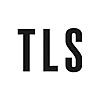Two poems by Virginia Woolf have resurfaced. I found them tucked in the back of a folder of letters to her niece Angelica Bell in the Harry Ransom Center at the University of Texas, Austin. Light verse, quickly drafted for her niece and nephew (Quentin Bell) in pencil on two sheets of the same grey-blue paper, “Angelica” and “Hiccoughs” delight in fantasy and invention. Their animal imagery and gentle satire aimed at children, sometimes revelling in sound over sense, place them in the tradition of Edward Lear, Lewis Carroll and Hilaire Belloc, and connect them to T. S. Eliot’s Old Possum’s Book of Practical Cats, written for his godchildren. The manuscripts join a handful of extant poems by this novelist, who as a young woman could not get on with poetry and as a mature author declared it “defunct”. This doggerel was not meant to revive it. Instead, like most of Woolf’s other known poems, it takes up poetry to do something; in this case to play, poke and charm, and to help with what Angelica thought was one of her aunt’s greatest gifts, creating intimacies with people.
Woolf’s earliest known poem is a quatrain written (c.1892) for the Hyde Park Gate News, the whimsical newspaper that she and her siblings produced. A mother looking after her sick son, as Woolf’s mother did for many in need, is compared to a predatory animal: “Like the vulture hovers / O’er the dieing horse / thinking ever thinking / that her boy is slowly sinking”. Already, at ten years old, Woolf understood the comic power of a perverse image and a dippy rhyme. “Ode written partly in prose on seeing the name of Cutbush above a butcher’s shop in Pentonville” (1934) is, as the immoderate title suggests, a narrative poem that exceeds the bounds of poetry. “Fantasy upon a Gentleman Who Converted His Impressions of a Private House into Cash” (1937), meanwhile, is a satire that uses occasional rhyme to skewer a journalist’s complacency (“his lack of attraction; his self-satisfaction”).
Equally, Woolf’s novels are full of poets and readers of poetry, from the Tennyson-quoting Mr Ramsay in To the Lighthouse to the pompous would-be poets Louis, Bernard and Neville in The Waves. She wrote original lyric poetry and dramatic verse for the pageant at the heart of her final book, Between the Acts. In fact, Woolf’s experimental achievement is sometimes said to be the mix she made of the novel and poetry: the combination of narrative and character with the emotionalism of the lyric and the rhythms of verse.
What connects all these disparate instances of verse and versifying is a certain distance from poetry: Woolf’s sense of what it represents, culturally, and what it can and can’t do. She used poetry, though she did not practise it. Emily Kopley’s Virginia Woolf and Poetry (2021) argues that poetry helped Woolf clarify her thoughts about fiction, which she defended as more democratic, more suited to capturing modern life. Kopley also gives us a feminist explanation for Woolf’s re-evaluation of poetry: she saw it as the preserve of men, who had for too long governed literary history. In A Room of One’s Own, the narrator sits in the plush surroundings of an Oxbridge college, replete but uncomfortable with its masculine privilege, wondering about a shift that has occurred. Poetry no longer feels relevant. If women are to write, as Woolf urges, they will need another form, one not so tied to tradition.
This scene originated in real life, in the Cambridge rooms of George “Dadie” Rylands, a poet and Shakespeare scholar who worked for the Woolfs at the Hogarth Press in 1924 and remained a lifelong friend. Rylands is the “fellow Dadie” in “Angelica”, which therefore must have been written after March 1927, when he was made a fellow of King’s College, but we cannot tell how much later, nor whether “Hiccoughs”, the poem for Quentin, was written at the same time, though both verses are written in a comparable hand. Angelica was with the Woolfs and her mother, Vanessa Bell, when they visited Rylands in October 1928. (Angelica’s older brother Julian left home for Cambridge in 1927, which might explain why there is no verse dedicated to him.)
Or it could be that they date from the period (1930 onwards) when Julian began writing his own poetry. Although Woolf did not think much of his work, it is conceivable that she did not want to share unserious efforts with a fellow writer. A photograph of Woolf and Angelica in 1932, held in Rylands’s papers at King’s, suggests another possible occasion. The image is by Lettice Ramsey, a Cambridge-based photographer. In 1932 she was also Julian’s girlfriend, so it may have been taken at Charleston or elsewhere. It appears to be summer: Angelica is wearing a short-sleeved light dress, her aunt a wide-brimmed hat. “Hiccoughs” certainly seems to be written from the perspective of late summer, to judge from a phrase Woolf crossed out: “all summer”. Rylands was often at Charleston in the summer, including for parties to mark Quentin’s birthday on August 19.
What is certain is that both poems emerge from the mood of these kinds of gatherings. Rural holidays had been important to the Stephen sisters as children, and Charleston was a comparable source of freedom and natural pleasure for its young residents. The “viper” and the “violet shady” crossed out in “Angelica”, and the subject matter of “Hiccoughs”, are redolent of Angelica’s memory that Charleston was “bathed … in the glow of a perpetual summer”: eating and drinking in the garden, a childish sense of wonder attached to the surrounding creatures and plants.
Quentin turned seventeen in the summer of 1927, and to modern readers “Hiccoughs” might seem too childish to have been meant for a young man. But such flights of fancy, which characterized the Stephen children’s language in the Hyde Park Gate News, had continued to inform the imaginative lives of the Bells as they grew up. Woolf collaborated occasionally with her nephews on Charleston’s own humorous newspaper, the Charleston Bulletin, and her poems can be seen as part of a long family tradition of using shared language, humour and outlandish images to break down boundaries, expose weaknesses and send up indignities.
The Harry Ransom Center poems are also related to another group, similarly unstudied, that emerged from family camaraderie. In Julian Bell’s archive at King’s College are a bundle of papers called “poetry games”, the results of a parlour game the family played in the 1920s (according to the archive’s dating), until around the time Julian left home. A title was chosen and each player added a line, creating a collaboratively written poem. Perhaps someone would then read it aloud. These co-authored sallies were hardly the form Woolf had in mind when she looked back nostalgically on earlier forms of communal literature, whether song or Elizabethan theatre. But they do have a collective function. Similarly, Woolf’s doggerel sought to close the breach between people. It was the light-verse equivalent of the kisses she needily demanded from Vanessa and Angelica each time she visited them.
In the case of the poems, the distance closed is between Woolf and her sister’s children. It was a relationship she worked at, but one riven by ambivalence. The wordplay of “Hiccoughs” and the kissing viper in “Angelica”, the jaunty rhythm and rhymes in both poems, echo the worlds of nonsense and fairy tales that she constructed around her niece and nephews to draw them into something that was theirs alone. With Angelica she made paper dolls and threw sugar lumps to the horses on Tavistock Square. Woolf was Witcherina and her niece Pixerina. In letters to her nephews she would prattle and play the eccentric. (One wonders how Quentin, especially, might have received his poem; perhaps in the same unkind spirit he and Julian discussed, privately, their aunt’s “cracked” behaviour.) Both poems are funhouse versions of how Woolf often was in company: ironic, flirtatious, a little mischievous.
Her powers were verbal, exercised in different ways and for different ends in novels, conversations and hastily drafted poems. She saw these strengths in contrast to her elder sister’s domesticity and maternal solidity. Virginia was flighty and imaginative, Vanessa a sensuous force. The difference between them was felt painfully by Woolf on the question of children. David Bradshaw insisted that the family japes of the Charleston Bulletin should not be read in relation to Woolf’s childlessness: they are simply amusing follies. But the issue was always vexed for Woolf, and Bradshaw’s separation of family from writing (serious or not) was not how she saw her childlessness, which was bound up with her identity as a writer: “These efforts of mine to communicate with people are partly childlessness”. Bearing and birthing a baby were thought to be too dangerous in her fragile mental state, so Leonard made the decision for them: there would be no children. Woolf mourned the boy and girl she did not have, but rationalized the lack. “You have the children, the fame by rights belongs to me”, she told Vanessa. And yet she wrote in her diary: “Never pretend that children can be replaced by other things”.
It is tempting, then, to read the poems for Angelica and Quentin as traces of roads not taken by Woolf: on the one hand motherhood and on the other the poems she might have written had she not been a novelist. But that would be too simple. Woolf engaged with poetry throughout most of her writing life, hybridizing the novel by cannibalizing poetry, as Kopley puts it. And though she did not have children of her own, these poems point to the ways Woolf threw herself into relationships with her young relatives, sometimes crossing the lines between herself and them.
“Angelica”, particularly, is fascinating for its identifications. Woolf’s enchantment with her niece is registered in the opening lines, which admire her name, body and soul. Angelica’s femininity charmed Woolf. But feminine allure, Woolf knew, was a complex gift: the “shame” that “Angelica” attaches jokingly to the child’s drinking and “sport[ing] with Dadie” speaks of the vilification of femininity when women fail to meet expectations. Woolf, too, knew that hot feeling of shame, as when her stepbrother George reprimanded her for making a party dress out of green upholstery fabric. “Angelica”, in belated response, enjoys the burlesque of transgressing certain lines. It seems to go further than Vanessa ever would have done in attributing sexuality to Angelica, who recalled a silence around sex in her household.
Is it too much to read something of Woolf herself in these boundary-crossings? The furtive phrases she struck out – “Dwelling in the violet shady / Viper kissed” – surely license some thoughts about the sexual currents running beneath the poem’s surface. Virginia felt a love akin, but not equivalent, to sexual passion for Vanessa – possessive, jealous, seduced by her beauty and vigour – and similarly strong feelings emerge in her appreciation of Angelica. She quipped that she was more than an aunt, “not quite a father perhaps, but with a hand (to put it delicately) in her birth”.
Perhaps the attraction that Woolf attributes to Angelica reveals her own fondness for Dadie Rylands, whose “tangled yellow hair” she was taken with in other contexts. (If the poem was written after 1933, this phrase may also nod to the eroticized yellow hair in W. B. Yeats’s “For Anne Gregory” of that year.) When they first met, Rylands reminded Woolf of a “young kitten … verging on the albino”. She noted with fascination his straw-like hair, and later called him “the Golden Boy”. Woolf’s biographer Hermione Lee tells us that “She began to like, in her forties, to be slightly fallen in love with by younger men (best of all by witty, talented, attractive and gossipy homosexual men)”. Is this why the painful sense of failure she feels around her childlessness is also, in one oblique diary entry from 1926, associated with asking Dadie to stay for the weekend? And why, in her letters to Rylands from the late 1920s on, she is self- conscious about her age? If Angelica’s femininity is at stake in the poem, it seems that Woolf’s is too.
Whether direct or vicarious, the sexual resonances in “Angelica” are noteworthy. They disrupt the binary associations we still have of Vanessa the sensual sister and Virginia the chilly, cerebral one. They hint at Woolf’s identification with young people, as does the silliness of “Hiccoughs”. Such renovation and giddy empathy were also central to the experimental vision of her novels.
Are they good poems? It’s the wrong question. In them one finds an expression of Woolf’s childlike qualities and her inability to resist, as Angelica put it, “the call of life itself, no matter what shape it took”. And anyway, Woolf had rejected the old ideas about literary value. For her poetry was relational: a weapon, a game, a kiss.
Sophie Oliver is Senior Lecturer in Modernism at the University of Liverpool
Two unpublished poems by Virginia Woolf
Angelica
The name was lazy & lovely
But the name was not the whole of her,
There was the body & the soul of her.Oh love [?] Angelica Angelica.
The Angel name
But oh the shameOf bringing
Drink she took to,
Dadie too,
Fellow Dadie,
Oh how shadyDwelling in the violet shady
Viper kissed,
To sport with Dadie,
And the tangled yellow hair!
Hiccoughs
To Quentin Stephen Claudian
Poor Quentin
Went in
To a cough?
Or should we call it cup?For all summer he
Hiccough? Hiccup?
Will swallow it up,Swallow or chuff?
But swallow a chuff?
Well cough it up
Cough it off,
Fly swallow, cough chaff.
The author would like to thank Emily Kopley, Maggie Humm, Stephen Barkway and staff at the Harry Ransom Center for their assistance.
The post ‘Hiccoughs’ and ‘Angelica’ appeared first on TLS.

 By Times Literary Supplement | Created at 2025-01-15 11:39:18 | Updated at 2025-01-15 17:48:33
6 hours ago
By Times Literary Supplement | Created at 2025-01-15 11:39:18 | Updated at 2025-01-15 17:48:33
6 hours ago





